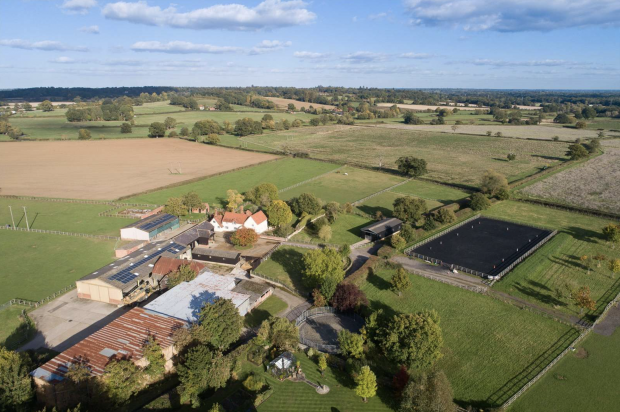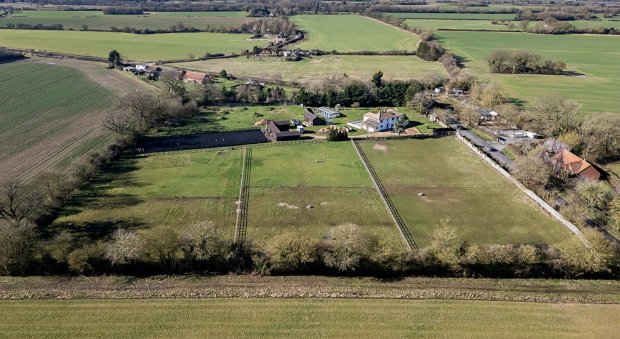If Horse & Hound ever ran a competition to name the worlds equestrian paradise, Ireland and the south-west of England would easily rank in the top five. Both have a friendly attitude to horses, miles of riding across jaw-dropping countryside and plenty of training and competition opportunities to build and test most riders prowess.
South-west England
Stretching from Somerset and Dorset to Cornwall, south-west England has a huge variety of landscapes and bridleways that virtually guarantees to please riders of nearly every discipline.
Plus the area is well served by competition centres, says William Grant of rural and equestrian estate agent Fox Grant.
William Grant says the majority of incomers are dressage and event riders, as well as lifestyle buyers.
Id say weve sold the greatest number of properties to dressage riders, but having said that, we also get plenty of eventing enquiries, he says. Theres a good eventing network. Mary King and William Fox-Pitt both live in the area.
And, of course, theres endurance with the Exmoor Golden Horseshoe among other rides and excellent hunting across most of the region.
But most of all, the south-west has wonderful countryside.
The scenery, quality and pace of life, and riding in places such as Exmoor, Dartmoor and the Quantock Hills are pluses that make this area attractive to any equestrian buyer, adds William Grant.
George Windsor Clive of estate agent Windsor Clive International says: It also has good grazing.
South-west Ireland
Talking of quality of grass, nowhere beats Ireland and its limestone-rich fields. Its not known as the Emerald Isle for nothing.
Theres some fabulous grass there, and horses grow good bones, says George Windsor Clive.
This, together with an historic tax exemption on stallion fees, has long attracted prospective stud owners to Irish shores.
The tax incentive will end on 31 July 2008, but Ireland is still a very good country to breed in, says estate agent Michael H Daniels.
Excellent Thoroughbred studs, such as Coolmore, which stands top racehorse sire Sadlers Wells, have given Ireland a reputation as the home of the worlds finest stallions. Although racing reigns supreme, the indigenous sports horse industry is also healthy. Irish eventing and show jumping are strong and grassroots interest in the disciplines is growing.
Theres a big increase in people getting into the sport on a hobby level, says Celia Lamb. The professionals in the sport horse industry are still quite small in numbers but are on the up.
There is also a thriving point-to-point calendar that attracts huge numbers of runners from November to June, according to Michael Daniels, who adds: The horse is ingrained in Irish rural culture.
And Ireland, with 41 registered packs, remains a haven for traditional hunting although the Green Party, which gained six seats in last months parliamentary elections, is determined to introduce a complete ban.
Counting the costs
Anyone contemplating a move across the Irish Sea, however, needs to take into account a few hard facts. House prices have risen enormously in the past few years. This, coupled with punitive stamp duty rates, which clock in at 9% for residential houses over 635,000 (£430,800), makes Irish property significantly more expensive than its equivalent in the English south-west.
Land purchase is very much driven by the heart and is part of the Irish psyche, agrees Michael Daniels. Land in Ireland is five times more expensive than in England, 6.5 times more than in Wales and 9.5 times above that in Scotland. The current average for Ireland is 23,650 (£16,000) per acre, while England is 4,600 (£3,100).
And even though Irelands mainstream residential market is now finally softening, there is no sign of land prices falling back, due to the continuing hunger for equestrian and agricultural properties. As a result, supply is short at every level of the equestrian scale, and prices are high.
That said, the south-west of England has seen a sustained growth in house prices over the past 10 years.
I sold a property a cottage with 12 acres in 1998 for £212,000, and sold it again two years ago for £460,000, says William Grant. If I got it back now, I could sell it for £500,000 to £525,000. The market has more than doubled.
This is because demand has widened over the past few years.
Its no longer a regional market, says William Grant. Now, 50% of buyers are coming out of London, and at least 10% from abroad. Were getting lots of buyers from places such as Dubai, Canada, Spain and Ireland.
However, property remains relatively affordable here. Youre still getting more for your money, he adds.
Entry-level homes, such as a three-bedroom cottage with stables and land, start from £450,000, but the typical range for an equestrian property is £550,000 to £650,000. A big house, plus about eight to 10 acres, stables and facilities, would come in at about £750,000, adds William Grant.
And although the market is expected to slow down a little in the near future, it is likely to be gentle price growth rather than a fall with a thump.
This, together with good value for money and reasonable stamp duty, conspires to make the south-west of England a strong proposition for competitors and those buying into the lifestyle. Ireland, however, remains a valid choice for prospective breeders and wealthy hunting aficionados in search of a ban-free home at least as long as the Irish Green Party doesnt have a say in the matter.
This property focus was first published in Horse & Hound (21 June, ’07)




